You Too Can Grow California's Oldest Living Orange Variety
Nursery technician Rafael Villalba-Salazar of Germany harvesting scions from citrus mother trees at the facilities of UC's Citrus Clonal Protection Program. Photo by Stan Lim, UC Riverside
Sweet Mother Orange tree comes out of quarantineThe 1,000th tree approved for cultivation by California's Citrus Clone Protection Program is the oldest living orange variety in the state.
The program, hosted at UC Riverside, is the first of its kind in the world. It started in the 1950s, and its scientists spend up to three years testing and eradicating diseases from citrus fruits so they can be distributed to commercial and private growers.
By law, every newly propagated citrus tree in California can be traced back to a mother tree created at UCR under the protection program. Program Director Georgios Vidalakis and his group begin their process by testing incoming trees for more than 30 citrus diseases, whether the diseases are known to have arisen in the state or not.
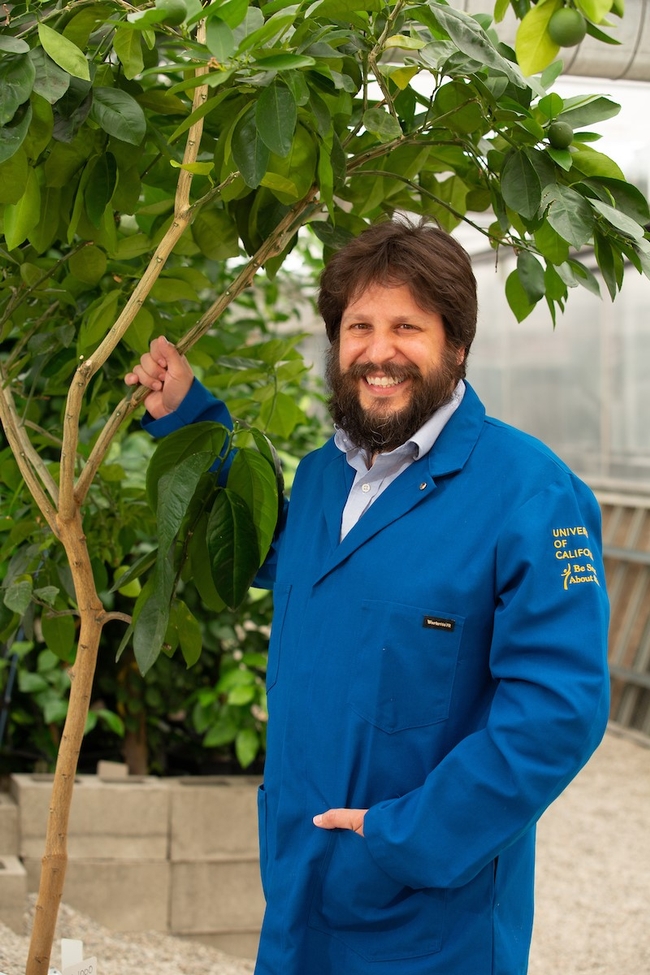
Georgios Vidalakis, Citrus Clonal Protection Program Manager, posing with VI1000, the Bidwell's Bar orange tree. Photo by Stan Lim, UC Riverside
The treatment for any disease identified in this first round of testing is to create a new mini-tree from a few cells of the original bud - short, leafless twigs with buds for propagation. "We use special plant cells for this process that diseases cannot penetrate," Vidalakis said.
Once the mini tree has reached a sufficient size, program scientists return and perform a second round of disease testing, ensuring they have selected the correct cells for propagation and eliminating any previous trace of disease.
If it passes the second set of arduous tests, the new tree gets a variety index or VI number that accompanies it for the rest of its life, and it is made public.
Nicknamed the Mother Orange Tree, Bidwell's Bar is a sweet Mediterranean orange brought to California from Mazatlán, Mexico, and planted in 1856. It was first planted near the Bidwell Bar Bridge near Oroville, then dug up and replanted twice.
Its survivability are some of the reasons Tom Delfino, former director of the California Citrus Nursery Society, recommended the old orange tree for the protection program.
"Apparently this strain is very hardy," Delfino said. “Not only has it survived many cold Northern California winters, but the tree has been dug up and replanted twice – once to protect it from impending flooding, and once to make way for the Oroville Dam. "
Much of the state's orange industry is based in regions with warm climates. Delfino, who lives in the San Francisco Bay Area, finds citrus fruits an exciting challenge to grow. By suggesting Bidwell's Bar endorsement, he hoped the protection program would clear him up so he could buy his graft.
When he visited the original tree, Delfino said the remote fruit was still missing. "I think it must be tasty because locals take it for themselves," he said. “It makes me even more eager to grow up and eat mine. I am extremely happy that VI testing is complete so that I can acquire it. »
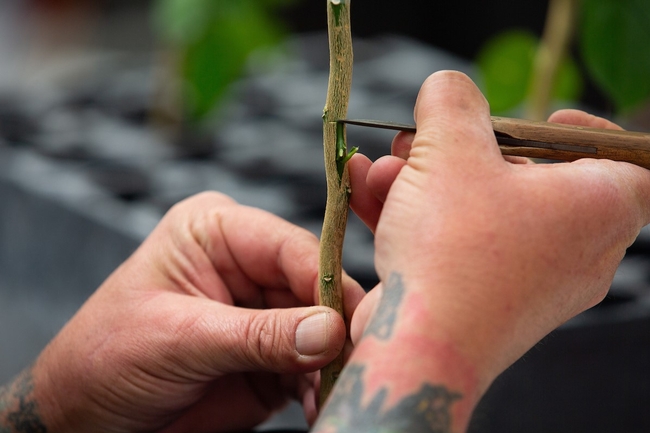
Scientists in the program graft citrus fruits using scions. Photo by Stan Lim, UC Riverside
Delfino also hopes this strain will make its way to commercial growers.
“I think our citrus industry is concentrated in the southeast San Joaquin Valley and is prone to a number of pests that like the warm climate there,” Delfino said. "Although it has seeds, which can be a deterrent, it can be grown in colder areas which discourages some of these insects."
The tree arrived in California nearly two decades before the better-known Washington Navel orange grown by Eliza Tibbets in Riverside. The navel gets its name from a structure at the lower end of the fruit, which looks like a navel. This structure is actually a separate fruit inside the larger fruit. Washington navel is also seedless, contributes...
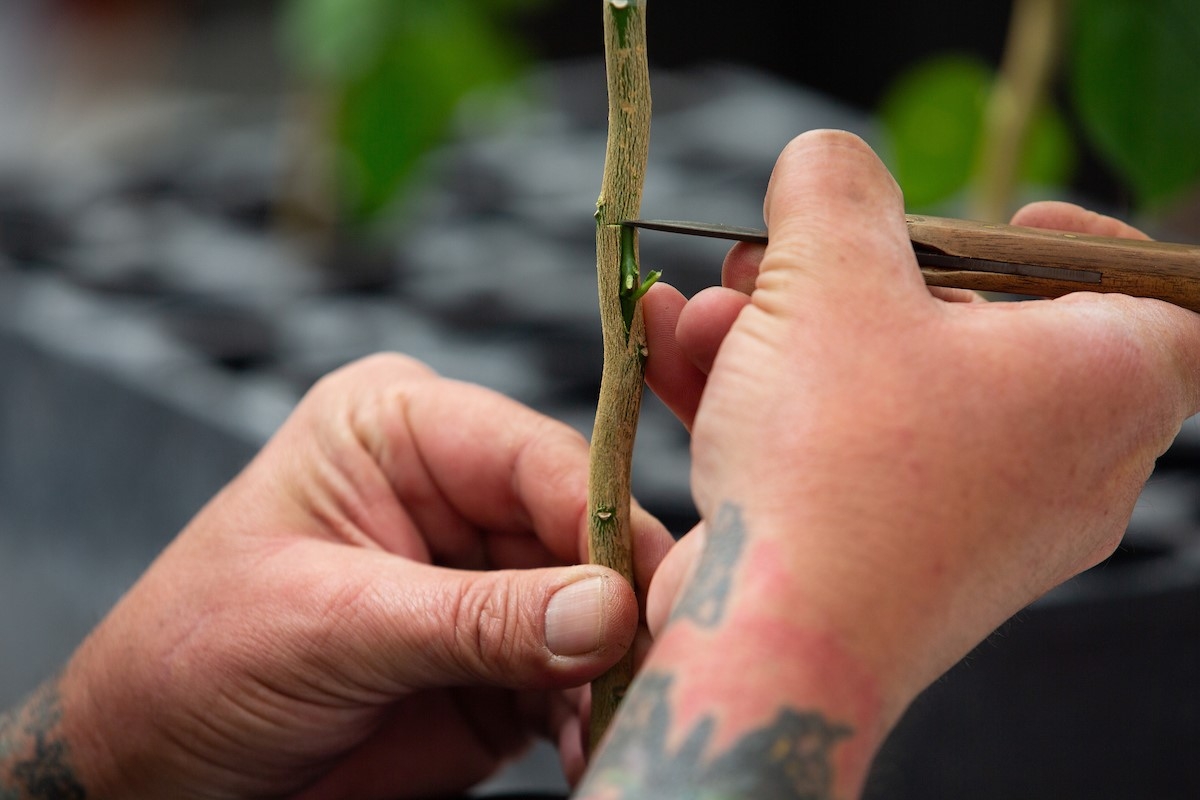
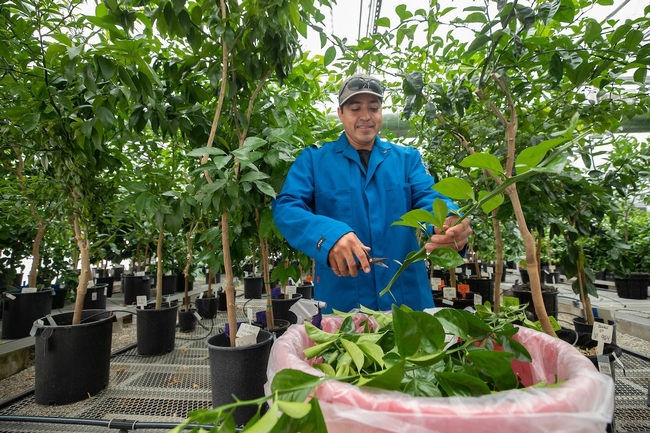
Nursery technician Rafael Villalba-Salazar of Germany harvesting scions from citrus mother trees at the facilities of UC's Citrus Clonal Protection Program. Photo by Stan Lim, UC Riverside
Sweet Mother Orange tree comes out of quarantineThe 1,000th tree approved for cultivation by California's Citrus Clone Protection Program is the oldest living orange variety in the state.
The program, hosted at UC Riverside, is the first of its kind in the world. It started in the 1950s, and its scientists spend up to three years testing and eradicating diseases from citrus fruits so they can be distributed to commercial and private growers.
By law, every newly propagated citrus tree in California can be traced back to a mother tree created at UCR under the protection program. Program Director Georgios Vidalakis and his group begin their process by testing incoming trees for more than 30 citrus diseases, whether the diseases are known to have arisen in the state or not.

Georgios Vidalakis, Citrus Clonal Protection Program Manager, posing with VI1000, the Bidwell's Bar orange tree. Photo by Stan Lim, UC Riverside
The treatment for any disease identified in this first round of testing is to create a new mini-tree from a few cells of the original bud - short, leafless twigs with buds for propagation. "We use special plant cells for this process that diseases cannot penetrate," Vidalakis said.
Once the mini tree has reached a sufficient size, program scientists return and perform a second round of disease testing, ensuring they have selected the correct cells for propagation and eliminating any previous trace of disease.
If it passes the second set of arduous tests, the new tree gets a variety index or VI number that accompanies it for the rest of its life, and it is made public.
Nicknamed the Mother Orange Tree, Bidwell's Bar is a sweet Mediterranean orange brought to California from Mazatlán, Mexico, and planted in 1856. It was first planted near the Bidwell Bar Bridge near Oroville, then dug up and replanted twice.
Its survivability are some of the reasons Tom Delfino, former director of the California Citrus Nursery Society, recommended the old orange tree for the protection program.
"Apparently this strain is very hardy," Delfino said. “Not only has it survived many cold Northern California winters, but the tree has been dug up and replanted twice – once to protect it from impending flooding, and once to make way for the Oroville Dam. "
Much of the state's orange industry is based in regions with warm climates. Delfino, who lives in the San Francisco Bay Area, finds citrus fruits an exciting challenge to grow. By suggesting Bidwell's Bar endorsement, he hoped the protection program would clear him up so he could buy his graft.
When he visited the original tree, Delfino said the remote fruit was still missing. "I think it must be tasty because locals take it for themselves," he said. “It makes me even more eager to grow up and eat mine. I am extremely happy that VI testing is complete so that I can acquire it. »

Scientists in the program graft citrus fruits using scions. Photo by Stan Lim, UC Riverside
Delfino also hopes this strain will make its way to commercial growers.
“I think our citrus industry is concentrated in the southeast San Joaquin Valley and is prone to a number of pests that like the warm climate there,” Delfino said. "Although it has seeds, which can be a deterrent, it can be grown in colder areas which discourages some of these insects."
The tree arrived in California nearly two decades before the better-known Washington Navel orange grown by Eliza Tibbets in Riverside. The navel gets its name from a structure at the lower end of the fruit, which looks like a navel. This structure is actually a separate fruit inside the larger fruit. Washington navel is also seedless, contributes...
What's Your Reaction?









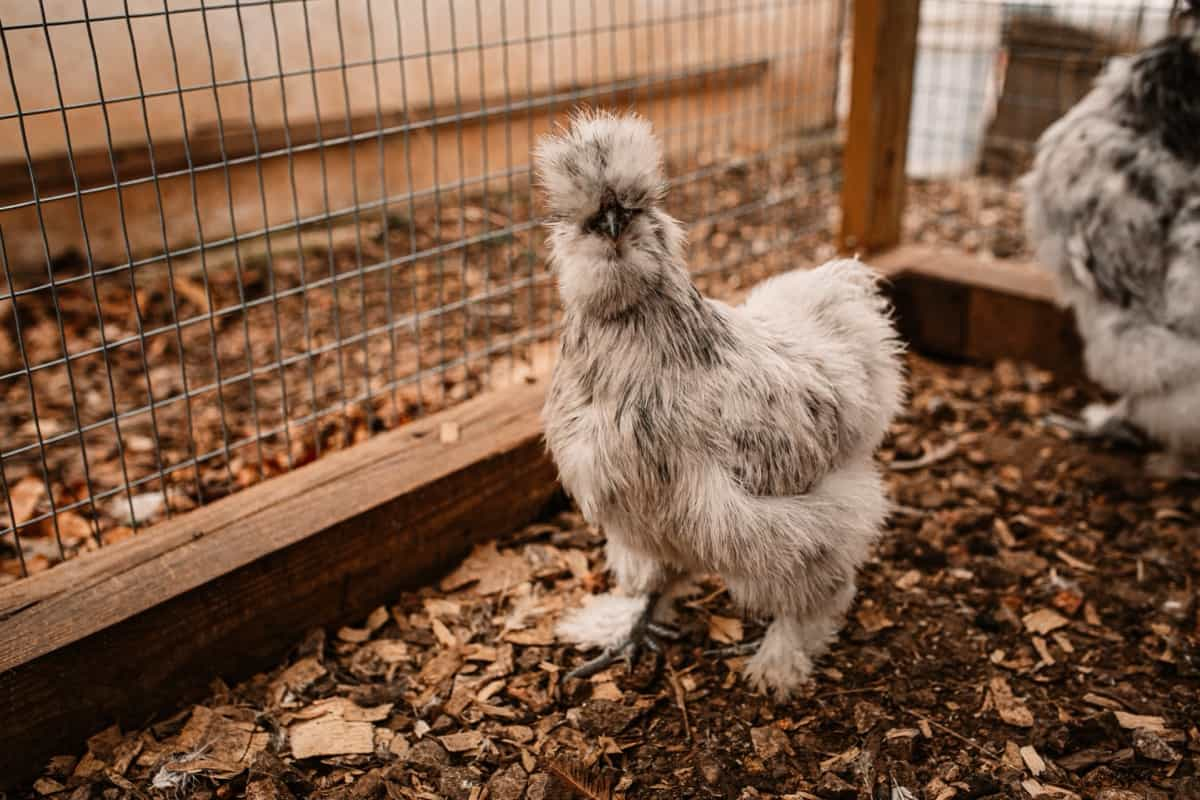
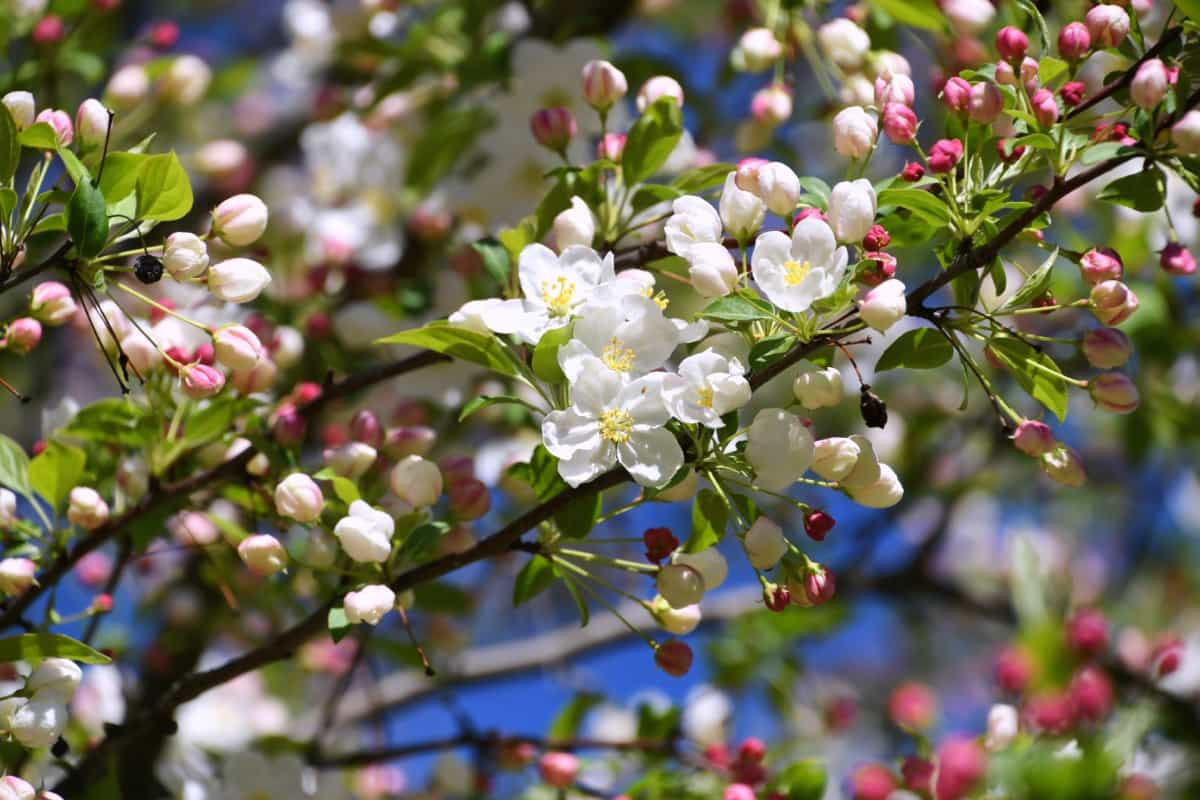



![Three of ID's top PR executives quit ad firm Powerhouse [EXCLUSIVE]](https://variety.com/wp-content/uploads/2023/02/ID-PR-Logo.jpg?#)







